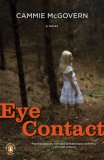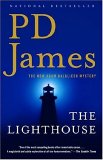Summary | Excerpt | Reviews | Beyond the book | Read-Alikes | Genres & Themes | Author Bio

The former residents of The Hawthorne House School for the Treatment of Autistic Children attend the first-ever reunion 15 years after the school closes, but events turn into a bloody nightmare when the school's founder is found tortured to death in the basement.
The first winner of the Mary Higgins Clark Award, Barbara D'Amato has been widely praised for her engrossing novels of crime and suspense. Now she opens the case file on a singularly savage murder, set in a uniquely disturbing setting.
The Hawthorne House School for the Treatment of Autistic Children was once known for its pioneering educational approach and remarkable success rate. Now, fifteen years after this celebrated institution closed its doors for the last time, staffers and former residents have returned to Hawthorne House for its first-ever reunion. The gala event turns into a bloody nightmare when the school's revered founder, Dr. Jay Schermerhorn, is found tortured to death in the mansion's basement.
Teacher, healer, and bestselling author, Schermerhorn enjoyed a worldwide reputation for his innovative therapeutic methods and compassionate treatment of autistic children. How could anyone have hated him enough to kill him? As Chicago detectives probe deeply into the history of Hawthorne House, a troubling picture emerges--of a man who inspired both fear and hatred in the children and families who came to him for help.
Death of a Thousand Cuts is a provocative and compelling thriller that exposes the insidious evil behind a facade of false benevolence. Like Mary Higgins Clark or James Patterson, Barbara D'Amato offers up a gripping tale that will chill and captivate readers long into the night.
Set in Chicago during the heat wave of 1995, D'Amato's new stand-alone thriller draws the reader into the world of autistic children. The character of Dr Schermerhorn (the former director of the Hawthorne House School) is based on Bruno Bettelheim, who ran the Orthogenic
School in Chicago and wrote many books on autism. His methods, roundly disproved
today, were based on the belief that 'the precipitating factor in infantile
autism is the parent's wish that the child should not exist'. In other words he
believed, and convinced many others, that parents were to blame for their
children's autism.
In essence this is a police procedural but the setting, complex characters and issues that the book raises set it way above the average...continued
Full Review
 (167 words)
(167 words)
(Reviewed by BookBrowse Review Team).
The character of Dr Schermerhorn is based
on Bruno Bettelheim, who ran the Orthogenic School in Chicago and wrote many
books on autism.
Bettelheim was born in Vienna in 1903. As a Jew in
Austria, he was interned in Dachau and Buchenwald from 1938-9. His release
was purchased (it was possible for some to purchase their release up until the outbreak of WWII) and he immediately emigrated to the United States, ending up
at the University of Chicago where he headed the Orthogenic School.
His methods, roundly disproved today, were based on the
belief that "the precipitating factor in infantile autism is the parent's wish
that the child should not exist". In other words he believed, and ...

If you liked Death of a Thousand Cuts, try these:

by Cammie McGovern
Published 2007
Adam, a nine-year-old autistic boy, is discovered hiding near to the body of his murdered classmate. Now the police are relying on Adam as the only witness to an appalling crime. But he can't tell the police what he saw—or what he heard. Barely verbal on the best of days, Adam has retreated into a silent world that Cara, his mother, knows only...

by P.D. James
Published 2006
The Lighthouse displays all the qualities that lovers of P. D. James’s novels the world over have come to expect: sensitive characterization, an exciting and superbly structured plot and vivid evocation of place.
When men are not regretting that life is so short, they are doing something to kill time.
Click Here to find out who said this, as well as discovering other famous literary quotes!